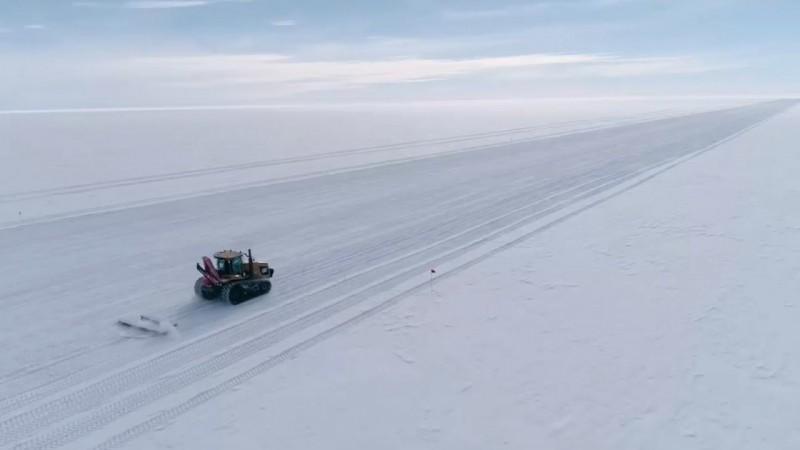Very rarely any traces of life is found beneath the Antarctic Ice but when sponges and other animals have been discovered recently on a boulder under 900 metres of ice and 500 metres of water in Antarctica, the research community went into a state of shock.
In fact, the creatures were spotted by chance by an underwater camera. The researchers had drilled through the Filchner-Ronne ice shelf on the south-eastern Weddell Sea to obtain a sediment core from the sea bed, where no sunlight reaches the animals. The team beleived that the life there might be living off food carried hundreds of kilometres from the nearest light.
The borehole drilled through by almost a kilometre down the Antarctic ice shelf, a video camera was sent to capture the footage and there, they found the first images of organisms, which survived there, belying all the theories held so far by the scientific community.

"Never in a million years would we have thought about looking for this kind of life, because we didn't think it would be there," says Huw Griffiths, a marine biogeographer at the British Antarctic Survey.
The study, published in the journal Frontiers in Marine Science, reveals that at a distance of 260km away from the open ocean, under complete darkness and with temperatures of -2.2°C, for the first time a discovery of the existence of stationary animals - similar to sponges and potentially several previously unknown species - was made.
"This discovery is one of those fortunate accidents that pushes ideas in a different direction and shows us that Antarctic marine life is incredibly special and amazingly adapted to a frozen world," says lead author Griffiths.
Current theories
Current theories on what life could survive under ice shelves say that all life becomes less abundant as life moves further away from open water and sunlight. Though some previous studies have found small mobile scavengers and predators, such as fish, worms, jellyfish or krill, in these habitats, it was held that the supply of food was from above.
So, the discovery of life at such low depths has come as a surprise when the team of geologists, drilling through the ice to collect sediment samples, hit a rock instead of mud at the bottom of the ocean. They were even more surprised by the video footage that captured life beneath the large boulder, consisting of strange creatures.
This is the first ever record of a hard substrate community deep beneath an ice shelf and a boulder as it appears to go against all previous theories of what types of life could survive there.

















